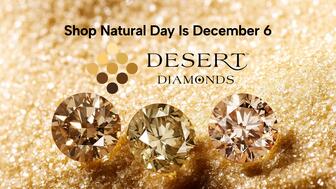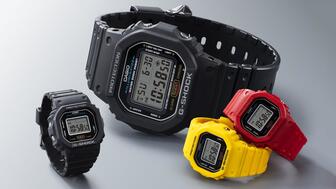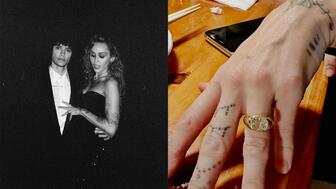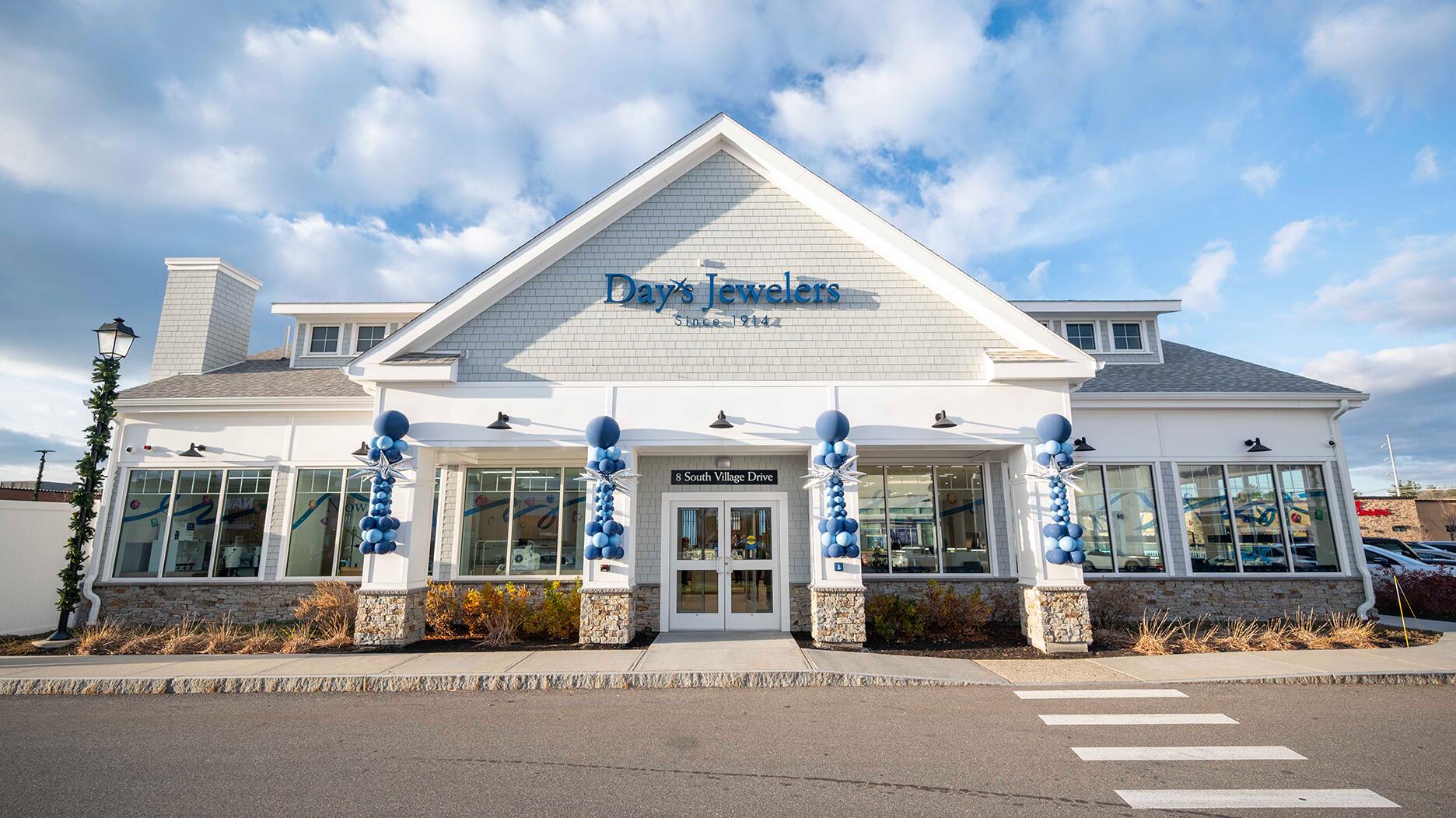In its annual report, Pinterest noted an increase in searches for brooches, heirloom jewelry, and ‘80s luxury.
4 Retailers on What Makes an Ideal Supplier
When jewelers talk supplier relationship goals, it often sounds like they’re describing a marriage. Attraction is a good start, but it has to grow from there.

In this story, we continue to explore connections, getting four other jewelers’ perspectives on one of the most delicate relationships in the industry today—the one between retailers and suppliers.

When we asked retailers what they can do to keep their suppliers happy, no one missed a beat. The first thing they all said was: pay our bills on time.
But in asking retailers what suppliers can do to make them happy, we got a more complicated response.
“The world has gotten smaller with the growth of the internet,” says John Green, CEO of Lux, Bond & Green, a six-store chain in New England founded in 1898. “So many suppliers sell directly to the customer. Some allow us to sell their products online. Some don’t. In general, the bigger the brand, the bigger the challenge.”
Successful retailers, including Green, see the ideal supplier relationship as a partnership.
When jewelers talk about this, it often sounds like they’re describing a marriage. Attraction is a good start, but then it’s all about transparency, reliability and common goals.
Perfect Partners
“A good supplier is someone who sees herself or himself as a partner in our business and our future,” says Lisa Bridge, president of Ben Bridge Jeweler and fifth generation of the Seattle-based family business, which has more than 100 stores.
She and her staff look for suppliers who share their expectations of quality, from stones to finishing.
“We’ve worked before with people we like and who have beautiful designs,” Bridge says. “But we found if that understanding of quality doesn’t come naturally to them, it just doesn’t work.”
“Any time [suppliers] don’t live up to their promises and we feel it’s not human error, we say ‘thanks, see you later.’ We’re done. Because there is no product you can’t get somewhere else.” — Steven Singer, Steven Singer Jewelers
Her team recently made a video celebrating a supplier’s 40th year in business and showed it at the Hong Kong International Jewellery Show in March.
“We were one of its earliest buyers and they were saying how appreciative they are of our long-term relationship,” Bridge says. “It works in both directions.”
What makes this vendor the perfect partner? Consistent supply and quality, she says, coupled with the respect and transparency embedded in a relationship built over time.
Retailer Expectations
What can suppliers do to help retailers sell their product?
“They [can] do everything they say they’re going to do,” says Philadelphia jeweler Steven Singer. “And I’ll have confidence that everything is what they say it is—ethically sourced with proper carat weight. We test samples because we want to keep honest people honest, but we have a responsibility to our customers. Any time [suppliers] don’t live up to their promises and we feel it’s not human error, we say ‘thanks, see you later.’ We’re done. Because there is no product you can’t get somewhere else.”
Retailers who sell designer jewelry say having the designers talk to staff is vitally important, too.
“To become successful, designers have to win the hearts and minds of our people,” Bridge says. “They can have the most beautiful merchandise out there, but if our associates don’t understand or believe in it, they’re not going to sell it.”
Successful retailers today also do a lot of online marketing. That requires killer images, and lots of them.
“Supplied photography is great but co-op dollars are even more important. If we want to run a magazine ad or a billboard and we have a designer who is willing to do it with us, that’s very helpful.” — Matina Williams, Be On Park
Green says great photography is imperative but, unfortunately, not a lot of vendors have it. Exceptions include David Yurman, Ippolita, John Hardy and Marco Bicego, which is great for Lux Bond & Green’s social media as well as the retailer’s website.
He says the chain has to send jewelry out almost every week to have it reshot professionally, which is time-consuming and expensive, and a mark against suppliers.
“We have no choice, because the website is the No. 1 marketing tool of a company today,” Green says.
Owners of smaller, independent designer galleries appreciate help above and beyond photos.
“Supplied photography is great but co-op dollars are even more important,” says Matina Williams, co-owner of Be On Park in Winter Park, Florida. “If we want to run a magazine ad or a billboard and we have a designer who is willing to do it with us, that’s very helpful.”
Keeping Suppliers Happy
Along with paying bills on time, successful retailers strive to be responsive and transparent.
For a boutique retailer like Be On Park, this means every member of the store’s staff of 10 (13 including the owners) knows exactly what’s coming in and going out at all times.
Be On Park deals with a lot of goods on memo. This works because much of the jewelry is unique and handmade, and the staff responds quickly.
“If we’re working with a customer and they request something we don’t have, our designers are good about sending in something for us to show them,” Williams says. “Likewise, if a designer calls us at 4 to say they need a piece back, we get it to them. If we’ve sold a piece, we report that and pay them.”

Green puts a lot of stock in face-to-face contact with valued suppliers.
He brings vendors into his stores once a year to talk to sales staff and goes out of his way to meet with them in person, even when he’s not buying: “I go to more trade shows than I should,” he confesses.
He talks to suppliers about new work, quality and manufacturing, but also about what’s helping their sales with other jewelers, including social media best practices.
“We continue to learn,” Green says. “Sometimes, it’s just about the words we’re using. Things are changing so fast.”
Singer runs a different kind of jewelry business. There are no brands in his store except Steven Singer.
“I don’t believe in memo,” he says. “I don’t believe in having the vendor finance your business. They’re not in the banking business; they’re in the jewelry business. Profit margins are so thin and everything is so flat and transparent in today’s world, you really have to buy and pay for the goods and replace them quickly to be a good partner.”
Competing for Turf
Problems with sharing turf are almost always about e-commerce.
Jewelers large and small say competing with online sales, especially when vendors sell direct, is one of the biggest hurdles of the retailer-supplier relationship today. Many suppliers now sell direct and some big-name brands and designers exercise more control over e-commerce than others.
Many luxury watch brands, for example, prohibit jewelers from selling online but allow them to show the pieces on their websites to lure customers into the store.
There are also jewelry brands that restrict retailers from selling direct from their websites. A few brands allow select department stores to sell their products online but restrict independent jewelers from doing so, and sometimes won’t even allow them to show it online.
Shops that focus on less-established designers of unique goods have less of an issue with this.
Williams says most designers carried by Be On Park do not sell direct. If a customer in their area approaches Penny Preville or Elizabeth Locke directly, for example, they are directed by the supplier to Be On Park.
“If a vendor wants to be a retailer, God bless ‘em. They want to sell direct to the public? Let them. But you can’t do both.” —Steven Singer, Steven Singer Jewelers
But Be On Park also carries Roberto Coin, Ippolita, and David Yurman, all of which do sell direct.
It all comes down to exceptional customer service, Williams says.
She and co-owner Janice Blumberg work hard to make the shopping experience special, from the friendly, informed sales staff to beautifully wrapping every piece that leaves the store.
“It’s very hard to compete with online sales,” Williams says. “People are quick to check to see if they can get something online at a better price. Fortunately, many people still want to be able to touch things and try them on.”
Singer does not deal with suppliers who sell direct and if he discovers they are (sometimes under an alias), he drops them. As president of the Leading Jewelers Guild, he helped ensure that restriction made it into the buying group’s official guidelines.
“If a vendor wants to be a retailer, God bless ‘em. They want to sell direct to the public? Let them. But you can’t do both,” he says. “I don’t try to manufacture everything myself. I don’t want to become a diamond dealer. We know our place in the food chain.”
Ben Bridge’s Lisa Bridge agrees.
“Competing with vendors who sell direct is a tremendous challenge,” she says. “I think it takes total focus to be really successful in the retail environment. I don’t know the business of the supplier and I imagine most suppliers don’t know the retail business. We want people who want to be our partner. We don’t [need] people who want to be our competitor. We want to be playing for the same team.”
She believes any jeweler trying to land customers for life should be looking at suppliers the same way.
“Having a long-term relationship with our customers means we have to have long-term relationships with our suppliers,” Bridge says. “They are going to be there to take care of those customers when they come back. We need suppliers who see the big picture and want to join with us and build that success together.”
Editor’s note: A version of this jewelry industry analysis story first appeared in the print edition of National Jeweler’s 2018 Retailer Hall of Fame issue with the headline “A Delicate Balance: Retailers and Suppliers.”
The Latest

Starting Jan. 1, customers can request the service for opal, peridot, and demantoid garnet.

The new catalog features its most popular chains as well as new styles.

How Jewelers of America’s 20 Under 40 are leading to ensure a brighter future for the jewelry industry.

The filmmaker’s personal F.P. Journe “FFC” prototype was the star of Phillips’ recent record-setting watch auction in New York.


The new location in the Design District pays homage to Miami’s Art Deco heritage and its connection to the ocean.

Inflations, tariffs, and politics—including the government shutdown—were among consumers’ top concerns last month.

Roseco’s 704-page catalog showcases new lab-grown diamonds, findings, tools & more—available in print or interactive digital editions.

“Longtime favorite” presenters, as well as first-time speakers, will lead talks and workshops at the annual event in Tucson next year.

Silas Smith of Meridian Metalworks won the challenge with his pendant that blends Australian and American landscapes.

The sale of the 31.68-carat, sunset-hued stone was part of Sotheby’s first series of events and auctions in Abu Dhabi.

Most customers who walk into your store this month have made up their minds. Your job is to validate their choice, Emmanuel Raheb writes.

The collection features characters and motifs from Ukrainian folklore, including an enchanted mirror and a magic egg.

MatrixGold 3.11, the newest version of the jewelry design program, offers more flexibility, precision, and creative control.

The pavilion will be part of the 2026 JA New York Spring show, scheduled for March 15 to 17.

Kadet, a 1994 National Jeweler Retailer Hall of Fame inductee, helped grow the family-owned retailer in the Chicago area and beyond.

Billed as the world’s smallest wearable, Lumia Health’s new smart earrings have a health tracker subtly embedded in the back.

Don’t let those with December birthdays feel blue. Help them celebrate their month with blue zircon, turquoise, and tanzanite.

The new pink sapphire version of the piece dances with its wearer in the brand’s “Icons After Dark” holiday campaign.

A choice that’s generated a lot of commentary, Pantone says “Cloud Dancer” marks a fresh start and encourages relaxation and creativity.

The manufacturer’s holiday campaign features a gift guide filled with trending designs and jewelry that can be personalized.

The man was charged with theft, accused of ingesting the necklace while in a jewelry store in Auckland, New Zealand.

Sponsored by De Beers Group

The classic 5600 series G-Shock has been scaled down to about a tenth of its size, becoming a fully functioning watch ring.

The association’s annual conference and gala will take place Feb. 4, 2026, during the Tucson gem shows.

The January show will include a workshop for jewelry retailers on implementing AI to strengthen their businesses.

Fellow musician Maxx Morando proposed to the star with a chunky, cushion-cut diamond ring designed by Jacquie Aiche.






























